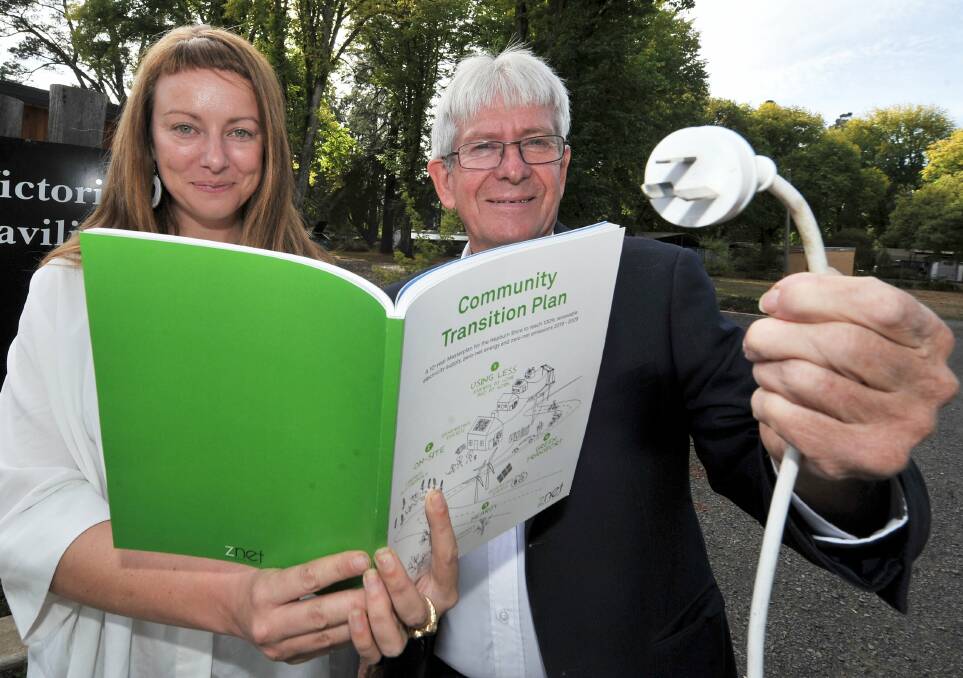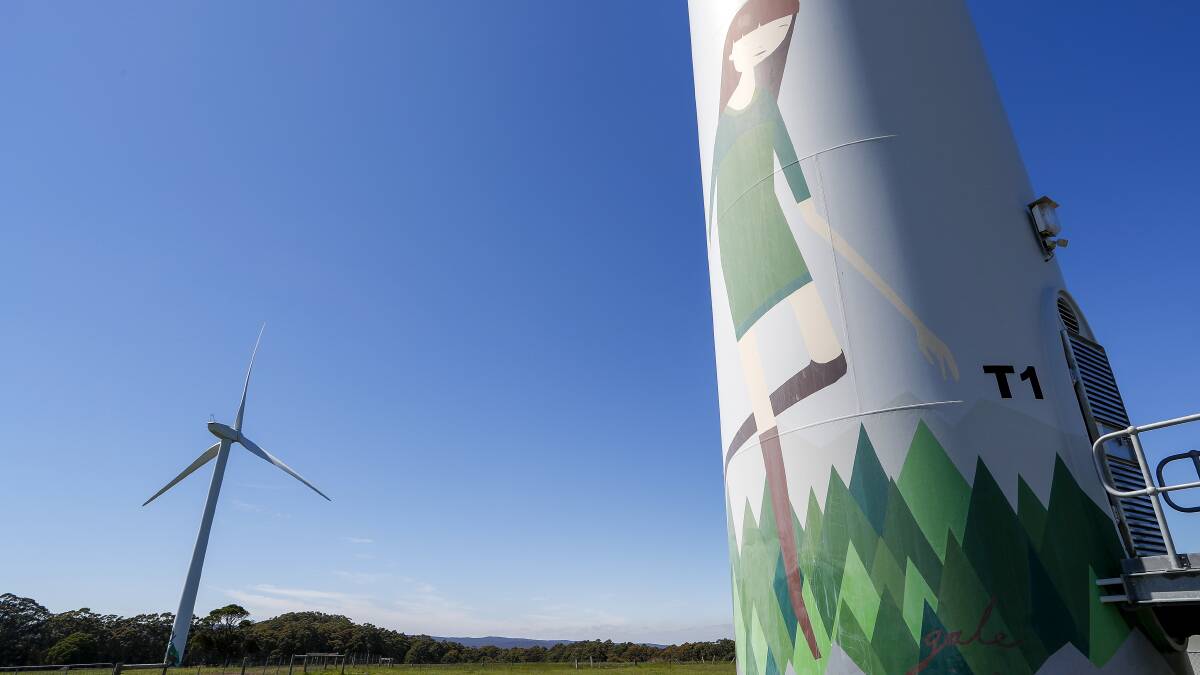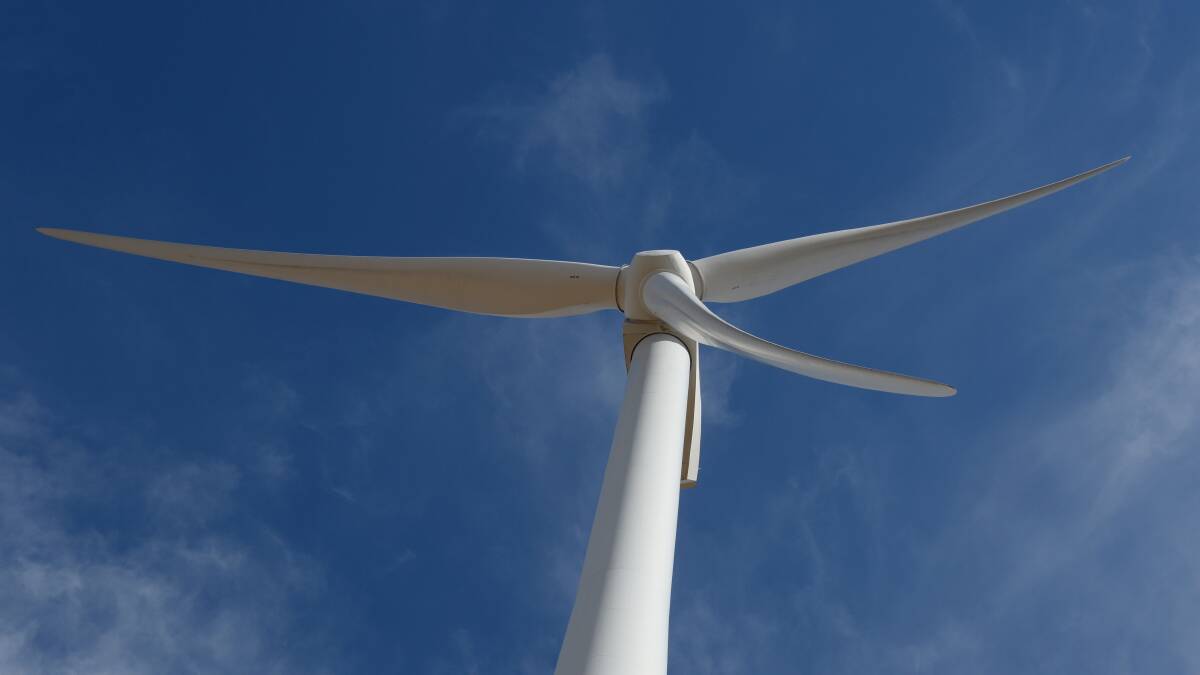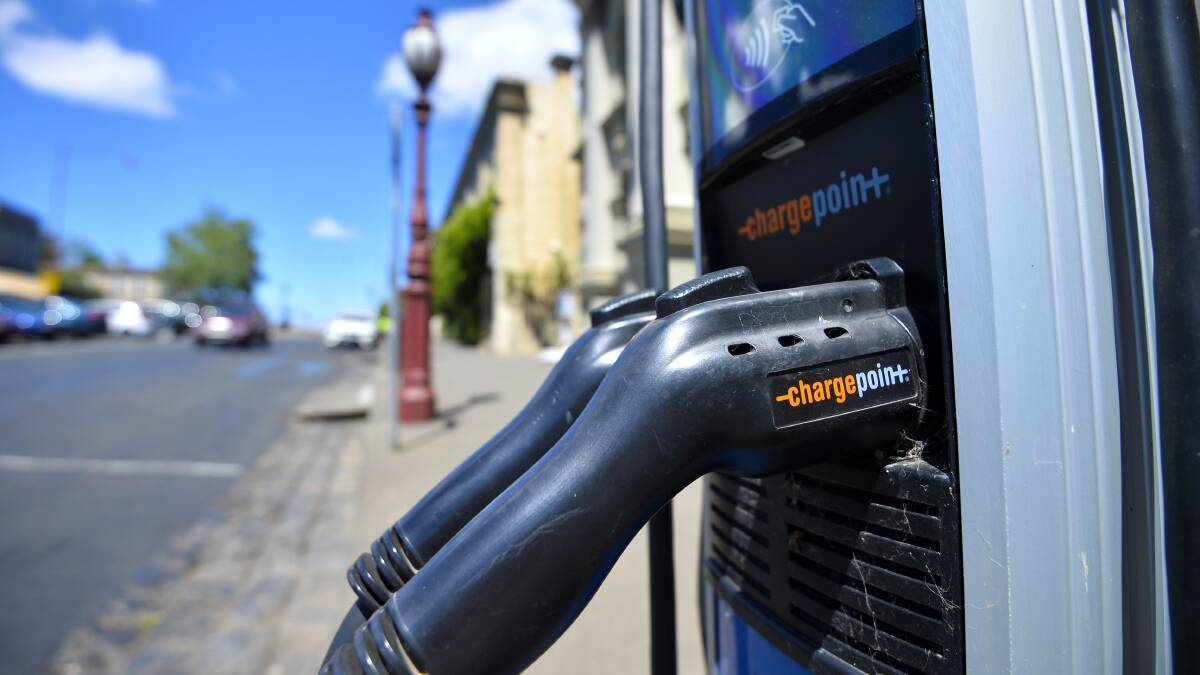
A 10-YEAR plan which will see Hepburn Shire become a lighthouse community in becoming the first local government area to source all of its energy from renewable sources and completely offset carbon emissions was launched on Thursday morning.
Subscribe now for unlimited access.
or signup to continue reading
The Z-NET community transition plan to zero-net emissions is a first for Australia, though there are plenty of operating energy towns around the world.
COMMUNITY
The Hepburn Shire community, of 15,000 people, was the first to voice a desire to be a zero-net energy and emissions community.
Hepburn Shire was chosen to be Victoria's first Z-NET pilot area due to there being existing community-owned energy generation through Hepburn Wind, five established community sustainability groups, support from the council and existing support from community members, many of whom have shown environmental leadership for decades, including Dallas Kinnear, Su Dennett and David Holmgren, as well as businesses.

The council is already involved with a number of sustainability projects including recently acquiring an electric car for its works team, introducing the Solar Savers and Solar Bulk Buy programs to make solar more accessible to all sectors of the community and a pilot anaerobic digester to process organic waste and make it into energy.
Meanwhile, Australian first community-owned energy generator Hepburn Wind - which was a grassroots project established after more than 2000 community members pooled $10 million to build a two turbine (4.1 MW) wind farm at Leonards Hill - was last year awarded $500,000 from the state government to expand to solar, which will make it Victoria's first community-owned hybrid wind and solar park.
The addition of solar will mean there will be consistent energy production for the community throughout the day and night.
THE PROJECT
With evident community support, Sustainability Victoria supported the shire to be the pilot area for which clear targets and pathways for the whole community to generate 100 per cent of its energy from renewable sources and furthermore, zero-net emissions were drawn up.
The Z-NET project has a working document which Sustainability Victoria's CEO Stan Krpan said will assist Victoria's 79 other municipalities to model their own plans to act on climate change, as it highlighted a transition pathway which also ensures vulnerable community members receive a share in the benefits.
The scope of the project involved data being collated on all aspects of the shire's emissions - including a ward to ward breakdown - during a 10-month period to create the most in-depth carbon emissions place-based profile ever created in Australia.
Emissions from the shire were 262,041 tC02-e tonnes (C02 equivalent tonnes) in 2018 but if nothing is done to lessen and mitigate the impacts of emissions, they are forecast to increase by 13.1 per cent to 296,000 tC02-e by 2029.
Based on last year's data, agriculture was the biggest source of emissions (livestock grazing and animal emissions), at 41 per cent.
This was followed by stationary energy (electricity, gas, diesel, LPG and wood), closely followed by transport energy (petrol, diesel and LPG) and then waste (landfill and wastewater).
Thus, the masterplan will help to see Hepburn Shire reach a 100 per cent renewable electricity supply, zero net energy and zero-net emissions by 2029.
Melton MP Steve McGhie, on behalf of Environment Minister Lily D'Ambrosio, said the state government recognised Hepburn was a progressive council while Hepburn Shire Council Mayor Don Henderson said the plan was important for the future of younger generations.
The project will involve three phases of implementation across focus areas of household and business energy use and generation, sustainable farming, sustainable firewood and green transport.
ENERGY
The project expands upon the plan of the original zero net energy town, Uralla, in New South Wales, which based their plan on stationary energy - the largest contributor to emissions.
According to the government, stationary energy includes emissions from fuel consumption in the generation of electricity, fuels used in the commercial, manufacturing and construction sectors and in heating and cooling households.
Hepburn Wind currently generates enough energy to offset Daylesford so the plan addresses ways in which the whole shire can benefit.
The aim of the plan - zero net energy - means the whole shire will have its energy needs matched with a renewable energy supply, meaning it can be sourced from the grid or elsewhere, but matched with local renewable generation.

Zero net emissions, or reaching carbon neutrality, means emissions are reduced, sequestered or offset.
In order to reach these targets and offset the 60,000MWh estimated electricity, actions like constructing the already funded solar farm at Hepburn Wind and expanding on the residential Solar Bulk Buy program are important, while other initiatives like creating awareness around usage, building battery storage and switching stationary energy from gas combustion to clean electricity will be required.
AGRICULTURE
This aspect of the plan is heavily reliant on industry challenges, like finding humane measures to reduce enteric emissions of livestock.
However, locally, personal action can be taken in terms of moving towards a more plant-based diet, or maintaining the current meat-rich diet but incorporating technology and holistic management to focus on the biology of animals, soil health and the eco-system to reduce emissions.
Climate smart farms, herd management and feeding nitrate supplements to beef cattle, feeding dietary additives to dairy cattle and capturing carbon in soil are all options floated in the plan.

WATER
Both the council, Central Highlands Water and Coliban Water have made commitments to zero net emissions within the timeframe of the Z-NET plan.
This will involve reducing waste going into landfill (particularly organic content), and both the council and the water bodies following through with their zero emissions waste commitments.
LAND USE
Changing land use, so to restore and reforest to use as carbon sinks for sequestration, is an opportunity in the land use sector and would offset agricultural emissions. These forests would not be used for firewood.

GREEN TRANSPORT
In the shire, transport energy is similar to stationary energy in terms of emissions due to the high levels of private transport use, so a large part of the plan promotes switching to cycling or walking for short trips, ride sharing and a shift to more energy efficient, or electric, vehicles.
For the shire's many businesses, a transition to light commercial vehicles is encouraged, with switching to biodiesel - a near zero emission alternative - an option to be used in existing diesel trucks.
The working plan, with current opportunities already costed, will require further funding during to implement during the 10-year period.

